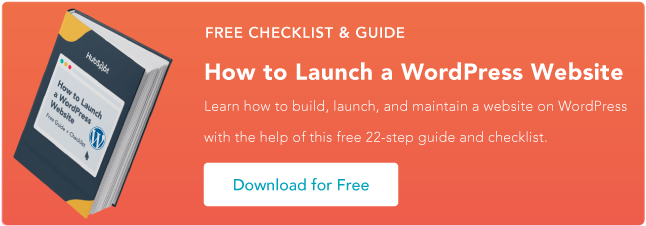What is a high-traffic event?
Put simply, a high-traffic event is when your website receives a lot of traffic over a very short period of time.
The exact amount may vary, but for the average website running on shared hosting, anything more than a few hundred visitors at once can be considered high-traffic. For more serious websites, a few thousand visitors at once may be considered a high-traffic event.
When do high-traffic events happen? It depends. Sometimes, your content may go viral, bringing thousands of visitors to your site randomly. Other times, it may be a consequence of an advertising campaign on social media sites like Facebook or Twitter.
Why are high-traffic events dangerous?
High-traffic events pose a lot of problems for websites with a standard setup. This is because most sites, especially those on shared hosting plans, can only expect a few thousand visitors spread out over the course of a month.
Even if you get more monthly visitors, the traffic is typically spread out over time. For example, if you get 100,000 visitors a month, that works out to about 140 visitors per hour. As you can imagine, getting hundreds of visitors in a matter of minutes is a huge increase.
When this happens, your server has a high risk of crashing, as it’s probably not designed to handle so much traffic. Over the years, there have been many phrases coined to explain this phenomenon, ranging from “website crash” to “Slashdotted.”There’s even a Wikipedia page for it.
As such, if you are expecting a big increase in traffic, you should do everything in your power to prepare. If you don’t, your site will probably slow down or go down.
How to Prepare for a High-Traffic Event in WordPress
Now let’s talk about some specific tactics you can use to prepare for a high-traffic event.
1. Clean up your site.
If you’ve been meaning to do a “spring cleaning”, now is the time.
If you have any old pages, images, videos, or other extra content that you don’t need anymore, consider deleting it – or at the very least, optimizing the pages and removing extraneous images. You want your site to be as lean as possible for the high-traffic event.
2. Adopt a minimal design.
As a famous designer once said, “Less is more.” This tip might not work for every type of site, but it’s still worth considering.
In general, the more “minimal” your website design is, the faster it will load. This means cutting down on images, videos, extra text, extraneous widgets, and anything else that isn’t necessary. Anything you can do to reduce the file size will help.
Minimal designs also make your site simpler, easier to navigate, and more accessible. Designs with too many colors and typefaces are both confusing to navigate and make your site less prepared for high-traffic events.
3. Get a CDN.
CDN stands for “content delivery network.” It sounds complicated, but the basic concept is quite simple: A CDN stores copies of your site on servers around the world. When someone visits your site, they’re sent a copy of your content from the nearest geographical server.
For example, if your CDN has servers in London, New York City, and Beijing, then visitors from Europe will be sent content from London, visitors from Boston will be sent content from New York City, and so on. Since the physical distance is smaller, the loading time is faster, and visitors are happier.
If your site attracts visitors from around the world and not just one geographical location, a CDN is worth it. And since the web is a global phenomenon these days, CDNs are just a good idea in general.
4. Remove unnecessary plugins and themes.
Plugins make it super easy to enhance your website. But when it comes to high-traffic events, you need to streamline your site for performance.
That means deactivating or removing any plugins that aren’t absolutely critical for the functioning of your site. Extra plugins can make your site load more slowly and also make it less able to handle incoming traffic. Remember, you can always reinstall them after!
5. Use a caching plugin or service.
Caching plugins make static versions of your web pages, allowing them to be loaded more quickly.
What’s a static version of a page? It means that there is no dynamic content that requires the browser to maintain an ongoing connection to your web server, and that the page is already pre-made and not generated individually for each visitor. Static content is useful during high-traffic events, as a visitor will only need to receive the site files a single time.
When it comes to caching plugins, there are many options available. The most widely used ones are WP Rocket,WP Super Cache and W3 Total Cache. Quite a few hosts (like Convesio) also incorporate caching into their hosting packages.
6. Optimize your JavaScript and CSS code.
JavaScript and CSS have a lot of “empty space” in their files. This is to make them more readable to humans.
Machines, however, don’t need this extra information, which means you can remove it. The process of removing excess code is called “minification” and it makes your files as small as possible to speed up your site.
Minifying your code is easy to do — you just need to pick a tool. Popular optimization plugins like WP Rocket can minify your code. There are also some standard ones like Autoptimize and WP Super Minify.
7. Reduce Time to First Byte.
Time to First Byte (or “TTFB” for short) is a metric for site speed. It tells you how long it takes for a byte (a small piece of digital information composed of 8 bits) to arrive in the user’s browser after being sent from your server.
You can test TTFB in a few different ways. Our favorite tools are Pingdom and GTMetrix. After you run a test, you’ll see a number of milliseconds. Anything above 500 milliseconds means your site is too slow and you should work on improving it. Anything below 200 milliseconds is probably good enough.
If your score is too high, what can you do? There are many small tweaks you can make to speed up WordPress, including picking a good host, using a CDN, keeping PHP updated, and optimizing your database. If you follow most of the other tips in this post, your TTFB should be solid, too.
8. Test your site with a load test.
A load test is a test of how your site can handle certain traffic amounts. Load tests are a great way to see what problems may arise before you actually have real visitors.
There are many load testing tools available and the entire process can be a bit tricky. Read this guide on Convesio’s site to learn more about the technical details of load testing. Personally, we recommend Loader.io. It’s simple, easy to use, and free.
9. Pick a good host.
Finally, we need to mention web hosting. All of the other things on this list definitely help prepare your site for a high-traffic event, but at the end of the day, the single most important thing is your choice of host. A bad host won’t be able to handle high traffic, no matter how much you optimize it.
Unfortunately, it’s not easy to switch to a different host at the last minute. That said, if you do the research ahead of time, it’s definitely worth the effort to migrate.
It’s recommended to search for hosts that have the ability to scale resources, instead of those that simply charge you a flat rate. This is usually called “auto scaling” by hosts. If you’re curious and want to learn more, check out this guide on auto scaling on Convesio’s website.
Also take note of how available support is, especially their response time. If you have an issue during your high-traffic event, you don’t want to be waiting around for help.
Don’t lose visitors to a high-traffic event.
High-traffic events can be a huge win for your website, bringing in more visitors and attention than ever. But, if you aren’t prepared, a high-traffic event can take your site offline, losing you potential customers in the process.
If you want to avoid that, it definitely pays to be prepared and incorperate some of our suggestions above before your event. If not, you run a serious risk of your site crashing.
WordPress Website



![How to become a WordPress developer [+ tips from WCEU speaker Paul Bearne]](https://53.fs1.hubspotusercontent-na1.net/hubfs/53/59_How%20to%20Become%20a%20WordPress%20Developer.png)








